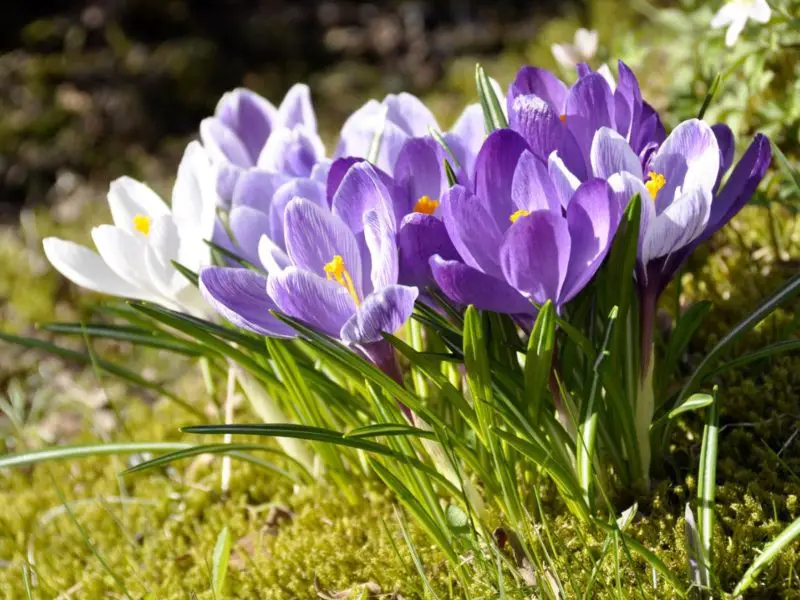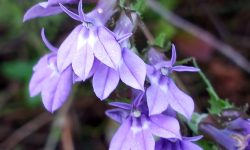Crocus flowers are among the first signs that winter is fading, their bright blooms often peeking through frost or even snow to signal the start of spring. These resilient little flowers are more than just a cheerful splash of color; they carry with them centuries of symbolism, tradition, and horticultural value. From ancient uses in medicine and culinary arts to their modern role in garden design, crocuses continue to inspire gardeners and nature lovers alike. Their ability to thrive in both naturalized meadows and carefully curated landscapes makes them an essential part of any seasonal garden.
What makes crocus truly captivating is not only their beauty but also their adaptability and hidden benefits. Beyond brightening gardens, certain varieties are valued for producing saffron, one of the most precious spices in the world. They also attract pollinators like bees at a time when few other plants are in bloom, supporting the ecosystem’s early spring awakening. Whether you’re a beginner looking for an easy plant to grow or an experienced gardener seeking ways to enhance your garden’s charm, crocus flowers offer far more than meets the eye.
Factors That Influence Crocus Blooming

Crocus bloom timing is not the same everywhere. Several natural factors influence when these flowers open. Climate plays the biggest role. In colder zones, crocus may appear later because the soil warms slowly. In milder regions, they can bloom as early as late winter.
Soil conditions also affect bloom time. Well-drained soil allows corms to awaken earlier, while heavy, wet ground delays growth. Sunlight exposure is another important factor. Crocus planted in sunny spots emerge faster compared to shaded areas. Proper placement in your garden directly impacts their flowering period.
Another element is variety. Different crocus species bloom at different times of year. Some varieties flower in autumn, while most produce blossoms in early spring. Understanding your chosen type helps you predict blooming more accurately. By combining environmental knowledge with plant selection, you can extend crocus displays across several months.
Crocus Blooming by Season
Early Spring Blooming Crocus
Early spring crocus often bloom when snow is still on the ground. These hardy plants push through frozen soil with remarkable strength. Gardeners in northern climates see them as the first burst of color after winter. Their delicate flowers may last only a few weeks, but they make a strong impact.
These early bloomers thrive when planted in sunny, well-drained areas. They do not mind the cold, but they need enough light to open fully. In regions with long winters, they often bloom in March or even late February. Their timing depends on how quickly soil temperatures rise above freezing.
Having early spring crocus in your garden ensures beauty before most plants awaken. They are also important food sources for early pollinators. Bees often rely on their nectar when few other flowers are available. For gardeners who value both color and ecology, early spring crocus provide unmatched benefits.
Mid-Spring Blooming Crocus
Mid-spring crocus varieties bloom slightly later, often overlapping with tulips and daffodils. They bring additional waves of color to your garden during April or early May. These crocus types enjoy slightly warmer soil and longer daylight. Their flowers appear larger and may last longer than the earliest bloomers.
These crocus add diversity to seasonal displays. When combined with other bulbs, they create layers of continuous color. Gardeners in moderate climates often prefer mid-spring varieties because they bloom when outdoor life becomes more active. Their timing fits perfectly into the rhythm of garden growth.
Planting mid-spring crocus with other perennials ensures your beds stay vibrant. They bridge the gap between early blooms and full summer displays. With proper care, these flowers return every year, multiplying naturally. Their ability to extend the bloom season makes them highly valuable in any garden design.
Autumn Blooming Crocus
Not all crocus bloom in spring. Some unique varieties produce flowers in autumn. These species emerge after summer heat fades, often surprising gardeners with sudden color. Autumn crocus may flower from September through November, depending on climate. Their timing brings a fresh wave of beauty when many plants are fading.
These crocus varieties require different care compared to spring types. They usually need planting in late summer, so their corms establish before blooming. Gardeners enjoy them because they extend the flowering season into cooler months. Their petals range from soft lilac to deep purple, adding elegance to autumn landscapes.
Autumn crocus can be used to refresh gardens after summer. They also provide nectar for pollinators preparing for winter. Combining both spring and autumn crocus gives your garden color nearly year-round. Their seasonal contrast ensures constant visual interest and natural balance.
Crocus Blooming by Climate Zones
Crocus in Cold Climates
In cold climates, crocus face longer winters and frozen ground. These conditions delay blooming until late winter or early spring. Gardeners in zones with heavy snow may not see flowers until March. However, once conditions allow, crocus appear quickly and with great strength.
Cold-climate crocus thrive when planted in full sun. They need well-drained soil to prevent rotting during snowmelt. Their blooms often last shorter because temperatures fluctuate widely. Despite this, their arrival feels especially rewarding after harsh winters. Gardeners rely on them as a true sign that spring is near.
Choosing hardy crocus varieties is essential in these zones. Species bred for cold resistance perform better and return annually. With proper care, they naturalize over time, spreading across lawns and garden beds. For northern gardeners, crocus remain an essential choice for early-season beauty.
Crocus in Mild Climates
Mild climates allow crocus to bloom earlier than in colder regions. Flowers may emerge in late January or February, depending on soil warmth. These conditions create longer blooming periods, giving gardeners extended enjoyment. In coastal or southern areas, crocus may flower before many trees even bud.
Mild winters mean soil does not stay frozen long. This allows corms to awaken sooner, producing strong shoots earlier. Gardeners often pair crocus with other early bloomers like snowdrops for layered displays. Their reliability makes them popular in regions where winters are less severe.
To maintain consistent blooms, gardeners should still ensure well-drained soil. While mild climates offer advantages, heavy rain can still damage corms. With simple care, crocus in these regions naturalize quickly and spread color across larger spaces. Their early flowering enhances gardens long before other plants return.
Crocus in Mediterranean and Warm Regions
Crocus can also grow in Mediterranean or warm climates. Here, autumn-blooming varieties perform especially well. Hot summers followed by mild autumn weather create ideal conditions. These crocus bloom between September and November, adding bright colors after summer’s intensity.
Spring-blooming crocus also succeed, though their timing differs. In these climates, they often bloom earlier than expected, sometimes in late winter. Gardeners must choose the right species to adapt to seasonal patterns. By selecting both spring and autumn crocus, they achieve nearly continuous displays.
These regions often feature dry summers, so soil preparation is key. Planting in well-drained beds prevents corm damage. With proper placement, crocus thrive even in challenging heat. Their ability to bloom in unexpected seasons makes them valuable in Mediterranean landscapes. They provide beauty when many plants are resting.
How to Extend Crocus Bloom Time
Extending crocus bloom time requires planning and care. One method is planting different species together. By mixing early spring, mid-spring, and autumn crocus, you ensure continuous displays. This approach offers color across several months instead of just weeks.
Another way to extend blooming is proper planting placement. Crocus planted in partial shade may bloom later than those in full sun. By varying exposure, you stagger flowering times. Soil quality also matters. Healthy, well-drained soil encourages strong and lasting flowers. Mulching can help maintain even soil conditions.
Deadheading is unnecessary because crocus blooms naturally fade. However, allowing foliage to remain after flowering strengthens corms for the following year. This ensures reliable blooms season after season. With thoughtful design and care, gardeners can maximize crocus displays and enjoy their colors much longer.
Planting and Care for Optimal Bloom
Planting Crocus Corms
Planting crocus corms correctly ensures healthy blooms. The best time for planting is in autumn, before the ground freezes. Corms need time to establish roots before winter sets in. Most gardeners aim for September or October planting.
Crocus prefer well-drained soil rich in organic matter. Plant corms at a depth about three times their size. Spacing them a few inches apart encourages natural spreading. Choose sunny locations for the best performance. With proper preparation, corms produce reliable flowers each season.
After planting, water lightly to settle soil. Avoid overwatering, which may cause rotting. Once established, crocus need little maintenance. Their resilience makes them ideal for both beginner and experienced gardeners. A simple planting routine ensures rewarding results every spring.
Watering and Feeding Needs
Crocus are low-maintenance plants with modest water needs. During active growth, they benefit from occasional watering if rainfall is scarce. Overwatering should be avoided, especially in heavy soils. Moist but not soggy conditions encourage the best flowering.
Feeding crocus improves performance over time. A balanced fertilizer applied in early spring strengthens plants. Slow-release options provide nutrients steadily, supporting both flowers and foliage. Fertilizer after blooming also helps corms store energy for the next season.
Once dormant, crocus require little attention. They rest underground, preparing for the following year. This natural cycle means they return with minimal effort from the gardener. By meeting their simple needs, you enjoy consistent blooms every season.
After-Bloom Care
Crocus care does not end when flowers fade. Foliage should remain until it yellows naturally. This process allows the plant to recharge corms for next year. Cutting leaves too early weakens future blooms. Patience ensures stronger displays over time.
Dead flowers can be gently removed to keep gardens tidy. However, do not disturb the foliage. Allowing leaves to complete their life cycle is critical. Fertilizing after bloom supports healthy regeneration underground.
Over time, corms multiply and form clusters. Dividing them every few years prevents overcrowding. This routine maintains vigorous growth and abundant flowers. Proper after-bloom care ensures crocus thrive season after season, rewarding you with reliable color.
Common Mistakes and How to Avoid Them
Planting at the Wrong Depth or Time
One of the most common mistakes with crocus is planting corms at the wrong depth. If placed too shallow, they risk exposure to frost and drying out. If planted too deep, the shoots may struggle to reach the surface, resulting in weak or delayed blooms. The correct depth is usually about three times the height of the corm, which allows proper insulation and stability.
Timing also plays a major role. Planting too late in autumn leaves little time for corms to establish roots before winter arrives. Without strong roots, they may fail to bloom in spring. To avoid this, plan your planting in early to mid-autumn, depending on your region. This ensures enough time for the corms to settle, leading to healthier flowers in the next season.
Overwatering and Poor Drainage
Crocus are adapted to well-drained soils, and excess moisture is one of their biggest threats. Overwatering or planting in heavy clay soil can cause the corms to rot before they even sprout. Many gardeners unknowingly make this mistake by treating crocus like thirstier plants.
The solution is ensuring good drainage. Choose sandy or loamy soil and avoid areas that stay soggy after rain. If your garden has heavier soil, consider improving it with compost or planting crocus in raised beds. Once established, crocus need very little watering. They thrive on natural rainfall in most climates. Providing just enough moisture without oversaturation is key to long-lasting success.
Planting in Too Much Shade
Crocus are sun-loving plants that depend on light to open their blooms fully. Planting them in shaded corners or beneath dense trees often leads to disappointing results. In too much shade, flowers may stay closed or fail to appear at all. Leaves may still grow, but the vibrant color of blossoms will be missing.
To avoid this, select planting locations that receive at least several hours of direct sun each day. Sunny borders, open lawns, and rock gardens are ideal. While crocus can tolerate partial shade, they perform best in bright light. By giving them proper sun exposure, you not only improve their display but also help pollinators who rely on open flowers for food.
Cutting Back Foliage Too Early
Another mistake many gardeners make is cutting back crocus foliage right after blooming. While removing faded flowers is fine, leaves must be left intact until they yellow and die naturally. This period allows the plant to photosynthesize and store energy in the corm for next year’s growth. Cutting too early weakens the plant and reduces future flowering.
To prevent this mistake, be patient. Allow the foliage to remain for several weeks after blooms fade. Even though leaves may look less attractive, they play an essential role in the plant’s survival. For a neater garden appearance, you can interplant crocus with other perennials that hide the fading foliage. This way, the crocus corms still recharge without affecting the beauty of your landscape.
Ignoring Naturalizing and Division Needs
Crocus corms multiply underground and often form dense clusters over time. While this is a natural process, overcrowding eventually reduces flowering. Some gardeners neglect this issue, leading to smaller blooms or fewer flowers each year. Left unattended, the corms compete for nutrients and weaken.
To avoid this, plan to divide crocus clumps every few years. The best time is after the foliage has died back in late spring or early summer. Dig up the corms carefully, separate them, and replant at proper spacing. This refreshes the planting bed and encourages stronger displays in following seasons. Regular division not only restores bloom quality but also allows you to spread crocus to new areas of your garden.
Designing Gardens with Crocus
Crocus in Lawns and Borders
Planting crocus in lawns creates natural-looking displays. They scatter color across green spaces, brightening early spring landscapes. When planted in groups, they mimic wildflower meadows. This style appeals to gardeners seeking informal beauty.
Borders also benefit from crocus. Their compact size allows planting in front of taller perennials. Crocus act as early color accents before larger plants dominate. Their timing fills seasonal gaps, ensuring gardens look alive earlier.
To succeed in lawns, crocus should be planted where mowing is delayed. Allow foliage to die back naturally before cutting. This balance keeps both grass and flowers healthy. With thoughtful placement, crocus enhance lawns and borders beautifully.
Crocus in Pots and Containers
Crocus grow well in pots and containers, making them perfect for patios and balconies. Their compact size suits small spaces. Gardeners can place them near entrances to enjoy early blooms up close. Containers allow flexibility, letting you move flowers to highlight different areas.
Planting in pots requires good drainage. Containers should have holes to prevent water buildup. Use a light soil mix enriched with compost. Grouping several corms together creates a full and colorful display. Containers can also combine crocus with other early bulbs for layered beauty.
Watering should be monitored carefully. Potted crocus dry faster than those in ground beds. Fertilizing lightly supports continued health. Once foliage fades, corms can remain in pots or be replanted outdoors. This method ensures easy enjoyment of crocus in limited spaces.
Crocus in Rock Gardens
Rock gardens offer excellent settings for crocus. Their small size and bright colors stand out against stone backdrops. Crocus thrive in well-drained, rocky soils, which mimic their natural mountain habitats. This makes them ideal candidates for alpine-style landscapes.
Planting crocus among rocks adds texture and contrast. Their blooms soften rugged spaces while enhancing seasonal interest. Gardeners often use them to brighten slopes or raised beds. Their timing ensures rock gardens show life early in the year.
Maintenance in rock gardens is simple. Natural drainage prevents rotting, and sunlight exposure is often optimal. Combining crocus with other alpine plants creates continuous displays. Rock gardens showcase crocus beautifully, highlighting their delicate yet resilient nature.
Benefits of Crocus Beyond Beauty
Ecological Value for Pollinators
Crocus flowers bloom at a time when few other plants provide food. This makes them vital for bees and other early pollinators. As soon as temperatures rise slightly, pollinators emerge in search of nectar and pollen. Without early-flowering plants like crocus, their survival would be more difficult.
By planting crocus, gardeners actively support local ecosystems. These flowers offer nectar-rich blooms that sustain insects during a critical period. In return, pollinators help fertilize other plants, creating a balanced cycle. This relationship highlights how crocus play a role beyond decoration. Their presence contributes to healthier gardens and thriving biodiversity.
Symbolism and Cultural Significance
Throughout history, crocus has carried symbolic meaning. In many cultures, they represent joy, hope, and renewal. Their ability to bloom after harsh winters makes them a natural emblem of resilience. People often see crocus as a sign that brighter days are approaching.
Crocus also appears in literature, art, and traditions. In some regions, they are linked with romance and youth. The famous saffron spice even comes from a type of crocus, showing cultural and culinary importance. Planting crocus brings not only color but also heritage. Their symbolic weight enriches gardens with meaning, making them more than simple flowers.
Low-Maintenance and Naturalizing Ability
One of the strongest benefits of crocus is their ease of care. Once planted, they return year after year with little effort. Crocus corms multiply underground, gradually forming clusters that expand naturally. This naturalizing process creates larger and more impressive displays without replanting.
Crocus are resilient to varying conditions. They tolerate cold winters and require minimal watering during dormancy. Their adaptability makes them suitable for beginners who want reliable results. Over time, these flowers fill lawns, borders, and beds with vibrant patches of color. Their low-maintenance nature ensures beauty without constant work, making them both practical and rewarding.
Health and Culinary Applications
Beyond their role in gardens, certain crocus species provide remarkable benefits for human use. The best-known example is the saffron crocus (Crocus sativus), whose stigmas are harvested to create saffron, one of the world’s most valuable spices. For centuries, saffron has been prized not only for its rich color and flavor but also for its medicinal qualities. Ancient civilizations used it as a natural remedy to improve mood, aid digestion, and support overall vitality.
Modern studies continue to explore saffaron’s potential health benefits. Research suggests it may contain compounds with antioxidant and anti-inflammatory properties. Some findings indicate saffron can support mental well-being by reducing symptoms of mild depression and anxiety. Culinary use is equally significant. Saffron enriches dishes with a distinctive golden hue and unique aroma, making it a staple in Mediterranean and Asian cuisines.
Although not all crocus varieties produce edible parts, the saffron crocus highlights how these flowers contribute far beyond ornamental purposes. Their role in health and cuisine demonstrates the diverse ways crocus have enriched human culture. This blend of beauty, practicality, and wellness underscores why crocus hold lasting importance across the world.
FAQ About When Crocus Bloom
When do crocus typically bloom in most gardens?
Crocus usually bloom in late winter or early spring, depending on climate and soil conditions. In warmer areas, they may appear as early as February, while in colder regions they often wait until March. Some special varieties even bloom in autumn.
Can crocus bloom through snow or frost?
Yes, crocus are hardy bulbs that often bloom through snow or frost. Their strong shoots can push through frozen soil, making them one of the earliest flowers to appear each year. This resilience makes them a favorite among gardeners in colder regions.
How long does the crocus blooming season last?
Crocus blooms are brief but vibrant, usually lasting two to three weeks. The exact length depends on temperature, sunlight, and care. By planting a mix of early, mid-spring, and autumn varieties, gardeners can enjoy crocus color over several months.
Do crocus come back every year after blooming?
Yes, crocus are perennial plants that return every year if planted in suitable conditions. Their underground corms store energy after blooming, ensuring fresh flowers each season. With proper care, they often naturalize and multiply, creating larger and more colorful displays over time.
How can I make crocus blooms last longer?
To extend bloom time, plant a mix of crocus species with different flowering periods. Position them in areas with well-drained soil and full sun. Avoid cutting foliage too early, as leaves store energy for the next season. Proper aftercare ensures healthier and longer-lasting flowers.
Conclusion
Crocus are timeless symbols of renewal, bringing vibrant color when winter fades. Their blooms appear in late winter, early spring, or even autumn, depending on climate and variety. By planting different types, gardeners can extend their beauty across seasons. These flowers not only brighten landscapes but also support pollinators when food is scarce. With simple care, crocus naturalize and return year after year, rewarding even beginners. Whether planted in lawns, borders, containers, or rock gardens, they guarantee stunning displays. Understanding when crocus bloom ensures you enjoy their cheerful presence every season.






